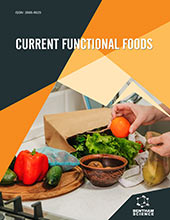
Full text loading...
Olive (Olea europaea L.) and carob (Ceratonia siliqua L.), which contain considerable amounts of phenolic compounds, are the most important nutritional and therapeutic plants in the Mediterranean basin.
The goal of this work is to revalue carob and olive leaves as key sources of polyphenols, hence increasing the value of waste goods.
In this study, aqueous acetone or ethanol (80% v/v) extracts of olive (O. europaea L. cultivar aimel) and carob (C. siliqua L.) leaves from Algeria were evaluated for phenolic content, and the extracts were characterized by reverse-phase high-performance liquid chromatography-electrospray ionization mass spectrometry (HPLC-ESI-MS).
The total phenolic content of olive and carob leaf extracts ranged from 5.6 to 23 mg GAE/g. The use of HPLC-ESI-MS to investigate phenolics revealed that the extracts included a variety of phenolic compounds, including 23 compounds in olive leaf extracts and 17 compounds in carob leaf extracts. In olive and carob, the major phenolic components are oleuropein and myricetin rhamnoside, respectively.
According to our findings, Olea europaea and Ceratonia siliqua appear to be rich suppliers of natural chemicals. These plants have a lot of potential in terms of medications and functional foods.

Article metrics loading...

Full text loading...
References


Data & Media loading...

